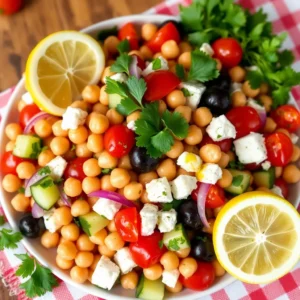Why You’ll Love This Garden Fresh Vegetable Frittata
Let me tell you a story about the morning I discovered the magic of frittatas. It was one of those chaotic Monday mornings where my toddler had somehow glued herself to the wall with peanut butter, my coffee maker decided it needed a vacation, and I was staring at my fridge wondering how to turn this mess into something edible. That’s when I stumbled upon this garden fresh vegetable frittata recipe – and let me tell you, it saved my sanity (and breakfast).
This versatile egg dish is packed with fresh spring vegetables and can be served for breakfast, lunch, or dinner. It’s protein-rich, satisfying, and showcases the best of seasonal produce. As someone who spends more time in the kitchen than anywhere else, I’ve tried countless recipes over the years, but this one has become my go-to solution for busy mornings, last-minute dinners, and even weekend brunches.
What makes this frittata so special? Well, for starters, it’s incredibly flexible. Don’t have asparagus? No problem – substitute with green beans or zucchini. Out of goat cheese? Try feta or Parmesan. The beauty of this recipe lies in its adaptability, making it perfect for home cooks who want to use up whatever they have on hand. And let’s be honest, we’ve all been there – staring at the fridge trying to figure out what to do with that sad-looking bunch of spinach or those half-eaten cherry tomatoes.
I love this recipe because it’s not just about feeding your family – it’s about creating memories. I remember the first time my daughter asked for seconds (and thirds!) of this frittata. She’s usually a picky eater, but there’s something about the combination of tender vegetables and fluffy eggs that made her forget she hated anything green. Now, this dish is practically a family tradition on weekends.
If you’re like me, juggling work deadlines while trying to make dinner, this frittata is your new best friend. It’s quick enough for weeknights but elegant enough for company. And the best part? You can make it ahead of time, refrigerate it, and reheat it whenever you’re ready. No more scrambling to get dinner on the table while your kids are fighting over the last slice of pizza. With this garden fresh vegetable frittata, you’ll feel like a culinary rockstar without breaking a sweat.
The Story Behind This Garden Fresh Vegetable Frittata
The frittata is an Italian dish that has become a staple in American kitchens. This spring version celebrates fresh garden vegetables and is perfect for using up seasonal produce. When I first encountered frittatas, I thought they were some fancy restaurant dish reserved for special occasions. But once I tried making one at home, I realized how simple and delicious they could be.
My journey with frittatas began on a chilly spring morning when I was visiting my grandmother in Tuscany. She greeted me with a plate of warm frittata, still steaming from the oven. “In Italy,” she said with a wink, “we call this our ’emergency meal’ – it can be made with whatever we have in the kitchen.” Little did I know that lesson would come in handy back home in my own kitchen.
Over the years, I’ve experimented with different variations of this dish, but the spring vegetable frittata remains my favorite. There’s something magical about the way fresh asparagus, sweet peas, and fragrant herbs come together in a golden, puffy package. I remember the first time I made this recipe for a dinner party. My guests were skeptical at first, thinking it was just another boring egg dish. But one bite, and suddenly everyone was asking for the recipe.
Now, this frittata has become a regular feature in my kitchen. Whether it’s a lazy Sunday morning or a last-minute dinner solution, it never fails to impress. And the best part? It’s incredibly forgiving. If you accidentally burn the edges a bit or if the center isn’t perfectly cooked, don’t worry – it’s still delicious. In fact, I’d argue that the slightly imperfect ones taste better, as if the imperfection adds character.
For more spring-inspired recipes that celebrate fresh produce, check out our article on Spring Vegetable Risotto with Lemon and Herbs .
Ingredients
Let’s talk about the stars of this show – the ingredients. First up, we have the foundation of any good frittata: eggs. These humble little orbs are nature’s perfect food, packed with protein and nutrients. For this recipe, you’ll need 6 large eggs. I always recommend using farm-fresh eggs if possible; they give the frittata a richer flavor and firmer texture. If you’re lucky enough to have backyard chickens, you’ll notice the difference immediately!
Next, we move on to the star of the show – spring vegetables. The most essential ingredient is asparagus. Look for bright green spears with tight tips – these will give you that distinctive spring flavor that simply can’t be matched. If you can’t find asparagus, green beans make a decent substitute. They have a similar texture and won’t overpower the other flavors.
Peas are another key player in this frittata. These little bursts of sweetness add a nice contrast to the earthier vegetables. Fresh peas are ideal, but if you’re short on time, frozen peas work just as well. In fact, many people prefer them because they’re typically flash-frozen at peak ripeness, preserving their flavor and color.
For leafy greens, I recommend spinach. It wilts down beautifully and adds a nice nutritional boost. However, any leafy green will work nicely here. Swiss chard or kale add a more robust flavor if that’s your preference. Just keep in mind that darker greens might add a stronger taste to the frittata.
Now, let’s talk about the cheese. Goat cheese is my personal favorite choice for this recipe. Its tangy creaminess pairs perfectly with the fresh vegetables. However, if you’re not a fan of goat cheese, you can substitute it with feta or Parmesan. Both cheeses will give the frittata a nice salty kick without overpowering the other flavors.
To bring everything together, you’ll need some olive oil. I prefer using extra virgin olive oil for its rich flavor, but regular olive oil works just fine. A few tablespoons should be enough to sauté the vegetables and give the frittata a nice golden crust.
For seasonings, you’ll need salt and pepper to taste. I also recommend adding some fresh herbs – dill or parsley work particularly well with the spring vegetables. If you’re using dried herbs, reduce the amount by half since they’re more concentrated.
According to the American Egg Board, eggs are one of nature’s most perfect foods, providing high-quality protein and essential nutrients like vitamin D and choline. You can learn more about the nutritional benefits of eggs at www.incredibleegg.org .
Execution
Alright, let’s get cooking! First things first, preheat your oven to 375°F (190°C). While the oven is heating up, grab a large skillet – preferably non-stick, because let’s be honest, no one wants to spend the next hour scrubbing a burnt frittata off a pan. If you don’t have a non-stk pan, don’t worry, just be prepared to do a little extra cleaning afterward.
Start by washing and preparing your vegetables. For the asparagus, trim off the woody ends and cut the spears into 1-inch pieces. If you’re using green beans instead, simply blanch them for a minute or two to soften them up. For the peas, if you’re using fresh ones, shell them until you have about 1 cup. If you’re using frozen peas, no need to thaw them – just add them directly to the pan.
Now, heat about 2 tablespoons of olive oil in your skillet over medium heat. Once the oil is hot, add your asparagus and sauté for 2-3 minutes until they start to soften. Next, add the peas and continue cooking for another minute. If you’re using spinach or another leafy green, now’s the time to add it. Cook until the greens have wilted down.
While the vegetables are cooking, crack your eggs into a mixing bowl. Add a generous pinch of salt and some freshly ground black pepper. Whisk until the mixture is smooth and slightly frothy. If you’re using fresh herbs, now’s the time to add them. Dill and parsley both work wonderfully with the spring vegetables.
Once your vegetables are cooked, pour the egg mixture into the skillet. Gently stir it around to distribute the vegetables evenly. Let it cook over medium-low heat for about 5-7 minutes, until the edges start to set but the center is still slightly runny. This is crucial – we don’t want it to cook all the way through on the stovetop because we’re going to finish it in the oven.
Now comes the fun part – adding the cheese. Sprinkle your chosen cheese over the top of the frittata. If you’re using goat cheese, it will melt beautifully and create those lovely pockets of creamy goodness. For feta or Parmesan, you’ll get a nice salty crunch that contrasts nicely with the soft eggs.
Carefully transfer the skillet to the preheated oven. Bake for about 12-15 minutes, or until the center is fully set and the top is golden brown. To check if it’s done, gently shake the skillet. If the center jiggles slightly but doesn’t look liquid, it’s ready.
Once it’s done, let it cool for a few minutes before slicing. This allows the frittata to set properly and makes it easier to serve. I like to serve mine with a sprinkle of fresh herbs on top and a dollop of Greek yogurt for a nice tangy contrast.
For more spring-inspired recipes that celebrate fresh produce, check out our article on Spring Vegetable Quinoa Salad with Herbs .
Additional Tips
Let me share some insider tips to help you make this garden fresh vegetable frittata truly your own. First and foremost, preparation is key. I always recommend having all your ingredients measured and chopped before you start cooking. Trust me, I’ve learned this the hard way after watching a perfectly good frittata turn into a scrambled mess because I couldn’t find the salt.
One of my favorite tricks is to partially prepare the frittata the night before. Sauté all your vegetables and whisk the eggs with seasonings. Store them separately in the refrigerator overnight. In the morning, simply combine everything, add the cheese, and pop it in the oven. This approach saves you valuable time when you’re racing against the clock to get breakfast on the table.
When it comes to achieving the perfect texture, temperature control is crucial. I’ve found that cooking the frittata over medium-low heat on the stovetop gives it the best results. If the heat is too high, the bottom will burn before the center is cooked through. If it’s too low, the eggs might take forever to set. Find that sweet spot and stick with it.
Don’t be afraid to experiment with different vegetables. One of the beauties of frittatas is their flexibility. Leftover roasted vegetables from dinner? Perfect. Some bell peppers from the farmers’ market? Even better. Just keep in mind that some vegetables require longer cooking times than others. Root vegetables like carrots and potatoes need to be pre-cooked before adding them to the frittata, otherwise they’ll remain raw in the center.
For serving suggestions, consider pairing your frittata with a side salad or some crusty bread. A simple arugula salad with lemon vinaigrette complements the flavors beautifully. If you’re feeling fancy, try adding a dollop of crème fraîche on top for an extra touch of elegance.
Storing leftovers is easy too. Let the frittata cool completely before wrapping it tightly in plastic wrap or storing it in an airtight container. It will keep in the refrigerator for up to 3 days. To reheat, simply place it in a 300°F oven for about 15 minutes until warmed through.
If you’re looking for more creative ways to use seasonal produce, check out our article on Lemon Herb Grilled Chicken and Vegetable Skewers .
FAQs
Can I make this frittata ahead of time for a brunch party? Absolutely! That’s one of the best things about a frittata – it’s delicious warm, at room temperature, or even cold. You can make it up to 24 hours in advance, refrigerate, and then bring to room temperature before serving, or gently reheat at 300°F for about 15 minutes. This makes it perfect for stress-free entertaining when you’d rather be chatting with guests than stuck at the stove.
What if I don’t have asparagus? No problem! Asparagus brings that distinctive spring flavor, but if it’s not available, green beans make a decent substitute. They have a similar texture and won’t overpower the other flavors. You can also try zucchini or bell peppers for a different twist.
How long does this frittata stay fresh in the refrigerator? When stored properly in an airtight container, this frittata will keep in the refrigerator for up to 3 days. To maintain freshness, I recommend letting it cool completely before storing it. For longer storage, you can freeze individual portions for up to 2 months.
Can I use frozen vegetables for this recipe? Yes, you can! Frozen peas work particularly well since they’re typically flash-frozen at peak ripeness. For other vegetables, I recommend thawing them first to remove excess moisture. This helps prevent the frittata from becoming too watery.
Why did my frittata collapse after coming out of the oven? Not to worry! A little deflation is perfectly normal and expected. Unlike soufflés, which rely on beaten egg whites for structure, frittatas naturally settle as they cool. This actually concentrates the flavors and gives you that dense-yet-tender texture that makes frittatas so satisfying. Embrace the rustic look – it’s part of the charm!
Can I make this recipe vegan? While this recipe calls for eggs, you can try using a flax egg substitute (1 tablespoon ground flaxseed mixed with 3 tablespoons water) for each egg. Keep in mind that the texture will be slightly different, and the frittata may not puff up quite as much. For more information on vegan egg substitutes, you can check out resources from Veganuary .
Is there a gluten-free option for the cheese? Most cheeses are naturally gluten-free, but if you’re concerned about cross-contamination, look for cheeses labeled specifically as gluten-free. Many artisanal cheese makers now offer gluten-free options that are safe for those with celiac disease or gluten sensitivities.
Garden fresh vegetable frittata is the perfect recipe for anyone looking to enjoy seasonal produce in a delicious and versatile way. Quick, easy, and packed with flavor, this dish will become your go-to meal for any occasion.



